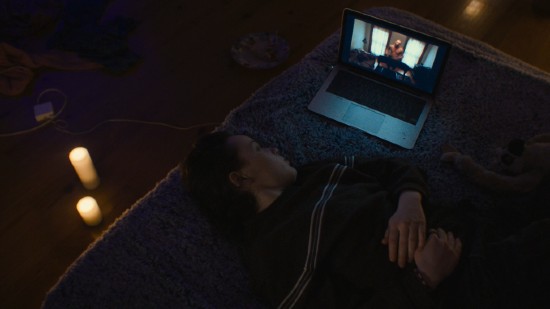In We’re All Going to the World’s Fair, Even Our Isolation Is Performative
An understated horror film uses creepypasta to meditate on modern loneliness.

I imagine a lot of folks are going to come at We’re All Going to the World’s Fair with an accusation you hear about a lot of horror movies: It’s not very scary. I guess I counter with the simple observation that I don’t know what “scary” looks like anymore in this, the year of our lord 2022. My kids’ schools don’t even bother contact tracing for COVID-19 anymore.
There aren’t a lot of the loud, gross-out moments you’re supposed to jump at, anyway. You aren’t supposed to feel any feeling of imminent, visceral danger as in other works whose horrors are meant to evoke the predations that “land, with great violence, upon the body,” as it has been said. No boogeyman lurks in the space just outside the frame, no call is coming from inside the house. There are some moments of body horror or uncanniness, but they’re occurring safely on the other side of a laptop screen. Yet, We’re All Going to the World’s Fair is a horror film nonetheless.

Casey (Anna Cobb, in her feature debut) is a teen who lives in some vast stretch of Nowhere, U.S.A., a place with bare trees, featureless horizons, empty parking lots and a stable internet connection. We know she lives with her father, but we never see him. (His only line, from off-camera, is to yell at her for listening to something too loudly at “three in the fucking morning!”) We don’t see her at school, though presumably she goes there, or with other people her age. We never see her interact with her father, with any friends she may have. Whatever people she does have in her life, they don’t know about any of the things the movie is showing us about her.
Casey begins awkwardly making videos in the style of a creepypasta community, something called The World’s Fair Game (as in, a game about the World’s Fair, whatever that is). To those who may spend, ahem, way too much time lurking on creepypasta forums or in that corner of YouTube, it’ll sound like a familiar premise. The first moments of We’re All Going to the World’s Fair watch Casey across a few abortive attempts to play the game, in one long take, introducing it first to an audience of—we assume—fucking no one. It’s an acting feat for Cobb, and sets the tone of the movie, which is quiet and filled with such long stretches that other people are also, probably, going to complain about.
Eventually, somebody does actually see Casey’s videos and respond to them in the creepiest way imaginable. Casey answers the mysterious person seeking to contact her, and for a long, uncomfortable scene, we think we know what kind of movie this actually is. (It’s not that kind of movie. It’s a relief that it’s not.) The scenes leading up to it, in which Casey wanders out to a shed in the winter cold and pulls out her father’s gun in the full knowledge that nobody is ever going to know or care to stop her, are what kind of movie this actually is, and where the real danger is for her.
-

-

-

-

-

-

-

-

-

-

-

-

-

-

-

-

-

-

-

-

-

-

-

-

-

-

-

-

-

-

-

-

-

-

-

-

-

-

-

-









































